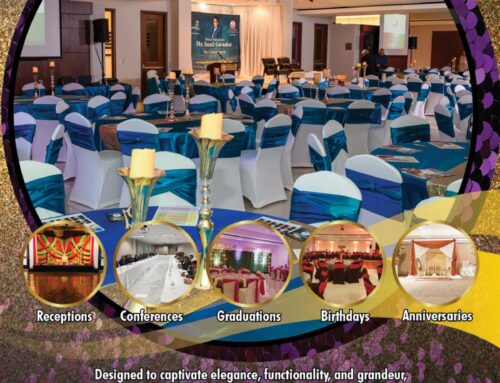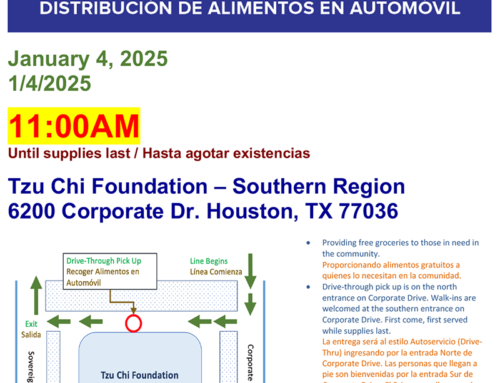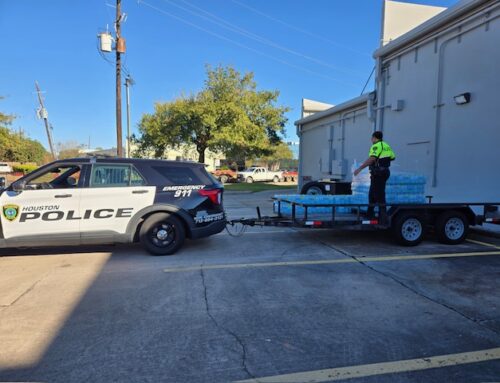
On his lapel is the familiar red logo of Prince’s Hamburgers, a comfort food restaurant brand that makes many long-time Houstonians’ mouths water with nostalgia and sweet memories of youth, mainly in the 1950s, 60s, 70s and beyond.
Elvis, “The King” of rock’n’roll, is gone. But Prince’s Hamburgers is back from the dead — at the golf course entrance just north of Bellaire Boulevard, smack in the middle of the Southwest Management District.
Fourth-generation Houstonian and longtime owner John Broussard, 68, closed the last of the Prince’s chain in the economic devastation brought on by Hurricane Harvey (2017). But the golf course’s pro, Doug Randall, and staff at the city Parks and Recreation Department coaxed Broussard back into business. The reborn Prince’s opened in late summer with little notice, first attracting hungry golfers. Now it also draws families with an itch for good ‘ol American food and a trip into a past era when many Prince’s outlets were strategically located near Houston high schools.
“We’re here,” Broussard told me as we talked in a booth whose upholstery reminded me of the tail fins on a 1957 Chevy. “And we’re glad to be here.”
Except for replacing heart-clogging lard with canola oil in the fryers, this Prince’s uses original recipes that pretty much go back to the way menu items were made since the Prince’s name came to Houston in 1934.
The menu features a smoky (not the same as smoked), mild-tasting “original” burger dressed with a trademark tomato sauce, mustard, tomato, pickles and old-time tiny, sautéed squares of onion.

The onion rings rang true with the help of a recipe that Broussard said includes egg-washing and the addition of buttermilk to the batter. The onion circles and the batter stuck together, as opposed to rings that are over-fried to a ruinous black outer coating that separates from the onion part.
No single item on the lunch menu is priced more than $7, except for the plastic, paper-lined basket containing six fried shrimp, fried sides and homemade tartar sauce.
Elvis is not alone in the effort to have the restaurant’s decor remind customers of the 50s and 60s. Art on the freshly painted cinderblock walls includes black and white photos of Prince’s carhops back in the day, and posters of old cars, Jerry Lee Lewis, Marilyn Monroe and Jimi Hendrix. Floors and cooking counters are decorated with jukebox equipment large and small.
Let’s just say that the Beaver Cleaver character from the old “Leave It To Beaver” TV show would feel at home in these surroundings.
The nostalgia theme continues with “Chrome n’ Coffee,” a gathering at Prince’s of painstakingly preserved old cars and their owners, on the first Sunday of each month. (See www.speedsportchrome.com for more information).
If you’re too young to know or too old to remember, here’s a detour into some of the nostalgia terms that are part of Prince’s history.
Carhops, almost all of them women, were restaurant workers who helped launch the fast-food drive-thru craze before the invention of the drive-thru window and personal computers. They’d dash to cars full of new customers, write down their food and drink orders and return in short order to deliver the items into the car by hand. Of course, this tradition became popular when “Yelp” was merely the sound made by a dog and “DoorDash” was something the dog did when the postal delivery worker stopped by.
Jukebox? A fat electric machine containing two-sided vinyl recordings, lovingly known as 45 revolutions-per-minute “records,” that were played out loud, with the help of otherworldly metal “arms,” when customers inserted coins and used buttons to make song selections. Now we do something similar with smart phones 1/500th the size of a jukebox, and the song selection is virtually unlimited thanks to music streaming services. No coins involved, either.

The tale began when Doug Prince Jr. opened a hamburger stand in Dallas. He was the owner, the cook and the only carhop. A few years later he visited Houston and found it to be, like so many other risk-takers before and after him, a land of plenty and dreams.
He bought a root beer stand here at 4509 S. Main in what is now Midtown. Soon he changed the name to Prince’s Famous Hamburgers #10. It was really #1, but Prince wanted his venture to seem already successful. Indeed, the chain went on to found at least 18 of them in Houston, San Antonio and Beaumont.
Prince converted the shape of his burgers from square, the style back then, to round. He worked with wholesaler Rainbo Bakery to develop locally made round buns to match. Rainbo’s board chairman around that time was John Koetting.
He was the grandfather of John Broussard, owner of the resurgent Prince’s.
Stop by any time between 8 a.m. to 6 p.m. seven days a week, and see if Broussard is around and will talk a little history with you — using masks and social distancing of course. But first, enjoy a trip through time by sampling his satisfying food.
Prince’s Hamburgers
6600 Harbor Town Drive
Houston 77036
713.773.7051
By Alan Bernstein








